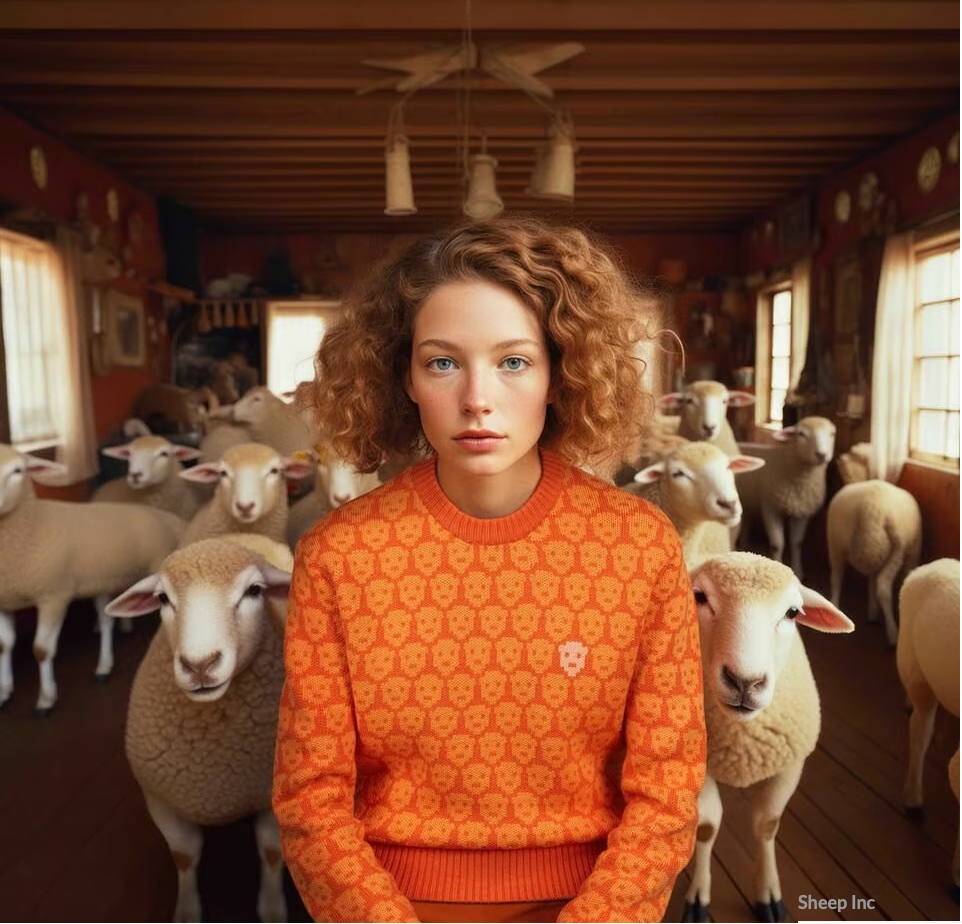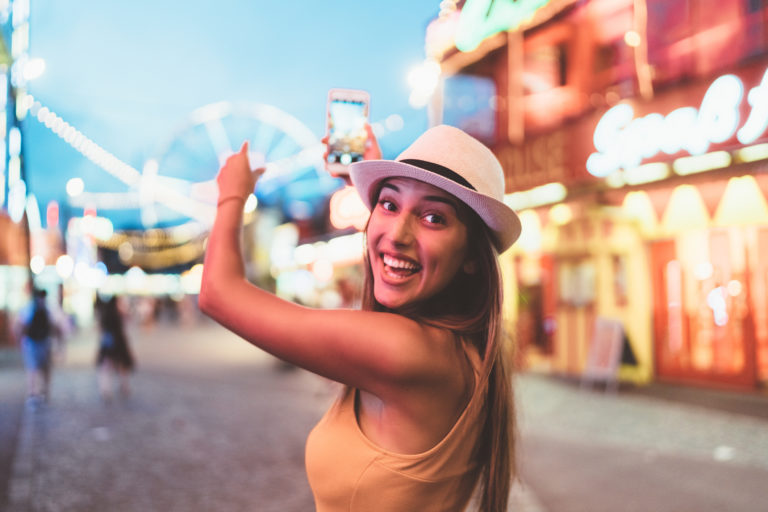Unwrapping the pros and cons of AI-generated content
By Helen Ketchin
(Above image from Carbon-negative T-shirt campaign by Sheep Inc.)
In the past few years, artificial intelligence (AI) has made huge strides, opening up exciting possibilities for brands looking to improve their content marketing.
With AI evolving so quickly, brands can now create content like articles, video scripts, social posts, and ad copy, that’s not only polished but also highly relevant, all in a fraction of the time and cost. But does AI really work for every type of content?
Understanding the impact of AI
In a global survey of marketing and media leaders in 2024, about 42% reported using AI tools regularly, either a few times a week or daily, for writing or generating content. Around 40% said they used AI for creating social media content. Interestingly (and worryingly for freelancers), 21% agreed that AI could help bridge resource gaps within their teams, and another 41% somewhat agreed. [Statista, 9th November 2024].
As we move into 2025, these numbers are likely to grow. With the pressure to produce fresh content constantly rising – whether to boost search rankings, build trust, or position a brand as an industry leader – AI is quickly becoming a go-to solution. But, as we’ll see from the examples below, it’s still early days, and it needs to be used strategically to drive real results.
How brands have used AI for content generation
AI has already shown great promise, especially in creating practical, functional content where speed and volume are key. For example, The Washington Post was an early adopter of AI-generated content, using it to write short match reports during the Rio 2016 Summer Olympics. This allowed their human reporters to focus on more complex, in-depth stories.
Similarly, Matalan used ChatGPT to create product descriptions for their men’s suits in Google Shopping ads. Not only did this save time, but it also boosted search impressions by up to 16% compared to ads with human-generated content. This was because AI-generated content performed better in Google’s SEO algorithm[1].
Balancing scale and emotional engagement
While AI is excellent at producing large amounts of content, relying on it too much can lead to a lack of depth and emotional engagement. AI often lacks the nuanced understanding a human writer can bring, which can result in content that feels flat or impersonal.
For instance, AI might not capture the quirky details that make a personal experience special. Imagine reading an article about life in the Cotswolds, like our writer Jo Hoare’s piece for PS UK: ‘I’ve Lived in the Cotswolds – Jilly Cooper’s Sexy Rivals Isn’t My Experience at All’. Would GPT-4 have known the local nickname ‘Chippy’ for Chipping Norton, or conveyed the hilarious ‘non-sexy’ reality of living in the Cotswolds, with so much drawn from personal experience? Unlikely.
If we get too focused on SEO or hyper-targeting, we risk losing the warmth and personality that make content truly engaging.
Watch out for potential risks
It’s important to check AI-generated content for accuracy. AI-generated content can slip into misinformation and without proper credit may be considered plagiarism. I’ve heard of someone who used AI to generate a pub quiz, only to discover that 8 out of 20 answers were incorrect. They turned it into a “guess the incorrect answer” quiz instead!
Even though The Washington Post made early strides with AI, leading news producers are still cautious. In fact, AI-generated content has been criticised for being vague, filled with buzzwords, and lacking real substance[2]. There is also a fear that AI-generated content could become training data for future language learning models (LLMs), causing a gradual erosion in quality and value.
Image generation and its role
Image generation tools like DALL-E and Midjourney have made it easier for marketers to create digital images from prompts. Many brands use these tools alongside programs like Adobe for the conceptual phase of campaigns. While the tools aren’t perfect – ask Midjourney to generate people walking on a busy street, and some might have their feet off the ground – they offer an efficient, cost-effective way for smaller brands to create marketing materials that would have otherwise been too expensive.
Sustainable knitwear brand Sheep Inc. is a great example of this. They used AI to generate models and backgrounds for their carbon-negative T-shirt campaign in 2023. Co-founder Edzard van der Wyck explained: “AI offered us an innovative, energy-efficient way to create a campaign with high production values without leaving a trail of carbon and waste behind. It’s been a real game changer for us, as it means we can combine detailed product photography with computer generated design, to create stunning visuals that showcase our products and worldview in a much richer manner. It has also allowed us to make the sheep themselves central to our campaign without animal welfare issues.”
Consider customer-centricity
However, using AI isn’t without its challenges. Take Mango’s recent AI-generated photoshoot for their teen clothing line, for example. The campaign faced backlash for using models that appeared unnaturally thin, which raised concerns about ‘false advertising’ and whether AI was replacing human jobs. While Mango defended the campaign as part of their push to stay innovative, perhaps future AI-generated campaigns could show more body diversity to avoid these issues.

Mango Teen AI-generated campaign
Another notable example was Coca-Cola’s use of AI for their 2024 Christmas ad. The ad sparked mockery on social media, not only for its poor creative execution (some said the magic had been lost since the days of Haddon Sundblom’s famous designs) but also for its high energy consumption. As one critic pointed out on X, it wasn’t an efficient process – generating a lot of footage with minimal usable shots. Generative AI doesn’t really ‘create’ from scratch; it blends and remixes existing content, often producing uncanny, glitchy echoes of human art, while guzzling an astounding amount of energy and resources.
Watch the ad here and see what you think…
These comments obviously contradict Sheep Inc’s point that using AI was energy efficient for them. We need to be aware that AI uses energy intensive technology, but that needs to be balanced with the alternative options, which may involve travel and using other materials and technical resources.
TLDR
AI tools can certainly improve efficiency and help spark new content ideas, but it’s crucial to use them with a clear strategy in mind. The key is to make sure that the content is aligned with your brand’s goals and is focused on customer needs.
In summary, AI is only as good as the strategy behind it, and over-relying on it can lead to content that misses the mark on emotional connection and authenticity. The human touch is still essential, and the creative industry will continue to need people to ensure that AI-generated content stays meaningful, relevant, and customer-centric.
[1] Digiday Report, featured in Retail Week, 27th August 2024 – Harnessing the power of content
[2] Marina Adami, Reutersinstitute.politics.ox.ac.uk, AI-generated slop is quietly conquering the internet. Is it a threat to journalism or a problem that will fix itself? 27th November 2024






